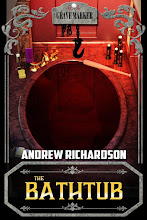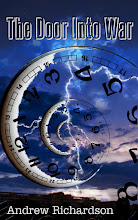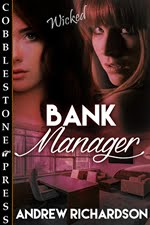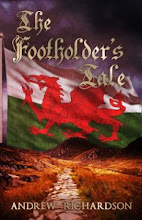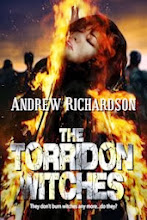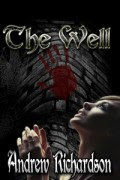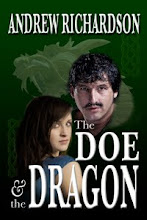Friday 1 January 2021
Writing Review of 2020
Sunday 13 September 2020
Characterisation
Every writer has their own methods for adding depth to their characters. I’m no different, so I thought I’d outline how I do it.
First, I’m not afraid to use stock characters. That’s people I use more than once, or several times in my case and usually under different names. My attractive twenty-five year old dark haired, green eyed female who appears in a lot of my work tends to be the same person, whether it’s Goewin in my historical fantasy ‘The Footholder’s Tale’, set centuries ago, or Kerry-Jane who appears in some of my contemporary erotica, and who made the supporting cast in ‘The Door into War.’ Using the same person in key roles means they hit the ground running because I know their personality and how they’ll react to any situation.
I also reuse some minor characters. Max, a senior professor, has been a mentor for younger academics in a few stories, such as ‘The Wood’ and ‘The Door into War.’ I also use pictures of people to help shape them. When searching for a picture I have a good idea of what I’m looking for, but seeing someone can help focus or add a detail that I’d not thought of. For example, a light scar which begs to be a remnant of a past adventure, or simply a habit of chewing a stalk of grass to add a bit of quirkiness.
I also write brief biographies. I used to complete lengthy character sheets for each key person. That was only semi-useful; it took a long time and was often counter-productive because I found it difficult to remember who was who, and I sometimes completely forgot something key amid the unimportant detail. Now I write a few paragraphs for each person alongside a photograph. The biography has the obvious like age, appearance and personality traits. I also include things like their reaction to key events they’re involved in, other characters they particularly like or dislike (and why) and what in the novel motivates them.
Next time you read one of my books look out for my dark haired heroine clasping some kind of pendant for reassurance. That might be a carved disc of Celtic whorls and spirals if she lives in ancient times, or maybe a locket if she’s from the twenty-first century.
Saturday 4 July 2020
The Saw Franchise
I didn’t buy the DVDs as they came out, or in order, so my understanding of the underlying threads was disjointed. Having had the house to myself for a few days recently, I decided to binge watch the series in the right sequence.
I agree with most reviewers that the earlier films are generally stronger, although I think all have something to offer. ‘Subtle’ isn’t the first word that comes to mind when watching Saw, but I liked the themes that run through the series, and particularly how the different characters are used and pop up unexpectedly yet in context time after time. It does all get complicated though and I would have found it difficult keeping track of everything without having with the franchise’s comprehensive Wikipedia page to hand.
To summarise, in my opinion the Saw films are worth a watch if it can be done in a binge, because they make better sense when seeing them in order in only a few days.
Friday 3 April 2020
Keith Publications
I’d like to thank Mary at Keith Publications for publishing the stories and for being great to work with.
Friday 13 March 2020
The 'Dragon of the Isle'
 History is full of colourful individuals, stretching back from ancient times right up to the present day. One figure who has fascinated me for years is Maelgwn, fifth century king of Gwynedd in north Wales. He’s already appeared in my novel, The Faerie Handmaiden of Annwyn, and looks set for a part in a new story I’m planning. Characters inspired by Maelgwn have also turned up in some of my other fiction.
History is full of colourful individuals, stretching back from ancient times right up to the present day. One figure who has fascinated me for years is Maelgwn, fifth century king of Gwynedd in north Wales. He’s already appeared in my novel, The Faerie Handmaiden of Annwyn, and looks set for a part in a new story I’m planning. Characters inspired by Maelgwn have also turned up in some of my other fiction.So, why does Maelgwn interest me?
Firstly, through my passion for fifth and sixth century north Wales. He’s one of the best known characters from the time and place who doesn’t come from myth and legend. Secondly, he’s a villain, and nasty people are always more interesting for writers than nice people. Maelgwn was berated by the contemporary writer Gildas (who calls Maelgwn ‘Dragon of the Isle’) for various evils: turning away from God, illegal marriage, and assassination are just a few, with Gildas hinting at more sins which he doesn’t describe. Myths and legends are equally unambiguous in their treatment; Maelgwn is portrayed as a tyrant who is often outthought and given his comeuppance by more intelligent or more pious enemies.
As a novelist, characters like Maelgwn are a godsend. He comes over as a strong character and a powerful bully. Gildas and other early sources give colourful detail, such as his death in a local church when he was driven mad by the Yellow Plague, and giving him the epithet ‘Maelgwn Hir’ (‘Maelgwn the Tall’), although I’ve seen this argued as being mistaken for a different Maelgwn. The stories he attracted could fill several novels and I’ve found myself using him, or characters inspired by him, in several stories without having to repeat anything.
All that is great material for an author. Another bonus is that in a period of few written sources there is very little else recorded about Maelgwn, so apart from his (often unspecified) sins and his dates, there isn’t much to go on (other than his notable height, assuming the right Maelgwn!). That gives writers wonderful scope for filling in the blanks according to the story’s needs.
In summary, Maelgwn is a brilliant subject for historical novelists, and I’m sure I’ll continue to use him in my stories set in ancient north Wales.
Wednesday 1 January 2020
Writing Review of 2019
In terms of publications, I’ve had three. That’s a personal best for numbers, but balanced by all three being shorter stories. They are:
- ‘Football Fantasy’, an erotic novelette;
- ‘Sunshine & Ice Cream’, an erotic short;
- ‘The Bathtub’, a violent horror novelette which also made it into a horror anthology.
As usual, I’m grateful to my publishers for having me and to my editors for turning my drafts into something readable.
Despite the publications, the year has been dominated by my relocation which has kept writing time to a minimum. I’ve not managed to update my blog much this year, again due to my move and settling into a new routine. I hope to be more active in 2020.
I’ve got a few projects planned for next year:
- A horror novel based around a heavy metal band. I’m about half way through the first draft;
- A horror/fantasy novel set during the English Civil War (the 1640s). It’s a new period for me so I’m having to do research. My background is in history so looking everything up is fun, not a chore;
- I’ve got a handful of completed horror novels hanging around which I’m happy with and which I’ll try to place. These are all centred around Celtic myth;
- Some more erotic shorts, mostly including Kerry-Jane and Amy, my favourite PhD students.
Finally, a big, big thank you to everyone who has been involved in my writing in 2019, particularly Philip.

Friday 15 November 2019
Local History and the Next Novel
One of the several things that drew me to north Wales, many, many years ago and before I’d even visited, was the region’s history. This is particularly true of the early Dark Ages, which have always fascinated me. The area is filled with myths and legends that are entwined with the stunning scenery.
North Wales has lots of places associated with King Arthur and several of the beautiful collection of stories making up the Mabinogion are set here. There are also a lot of local myths and legends – every hill, valley or lake seems to have its own tale.
There are also colourful characters who definitely lived post-Roman north Wales. The tyrant Maelgwn, King of Gwynedd; Vortigern, King of the Britons (okay, Vortigern is shadowy historical); and many saints who are credited with bringing Christianity to western Britain all lived around this time. Maelgwn and Saint Padarn played important roles in one of my north Welsh historical fantasies, ‘The Faerie Handmaiden of Annwyn’.
My own village lies in the middle of region and was (allegedly) founded around this time. With a degree in history and archaeology specialising in north Wales I hope I know the context and background, and I thought it would be fun to research and then write a novel about our saintly founder and include other local stories for colour.
 The reality is that research has been difficult. I can find nothing early written about the village, and archaeology is sparse – a Roman road and holy well (see photo) are about it. Stories say we were originally a religious settlement of Saint Gwyddelan who was a follower of the better known Beuno. Beuno lived in the first half of the seventh century, which gives a tentative date for settlement in our valley. However, I assume there were already people here to attract an evangelising saint and for the well to have been built up and paved.
The reality is that research has been difficult. I can find nothing early written about the village, and archaeology is sparse – a Roman road and holy well (see photo) are about it. Stories say we were originally a religious settlement of Saint Gwyddelan who was a follower of the better known Beuno. Beuno lived in the first half of the seventh century, which gives a tentative date for settlement in our valley. However, I assume there were already people here to attract an evangelising saint and for the well to have been built up and paved.I’d hoped to combine Gwyddelan’s story with the tale of Peredur to add some meat. Peredur was one of King Arthur’s knights who slew a monster (the afanc) in a pool at the end of the valley. Even if the story’s links with Arthur are ignored and we place the afanc episode after the king’s death, the Welsh Annals say Peredur died in 580 which is too early to combine with Beuno. I could ignore the ‘facts’ and claim artistic licence, but the historian part of me doesn’t want to.
In my historical fantasies I like to fill in empty spaces by telling a story in the way I want to, which works brilliantly in my chosen period. In this case, sadly, the canvas is a bit too blank to work with so I’ll have to pass on the idea.







